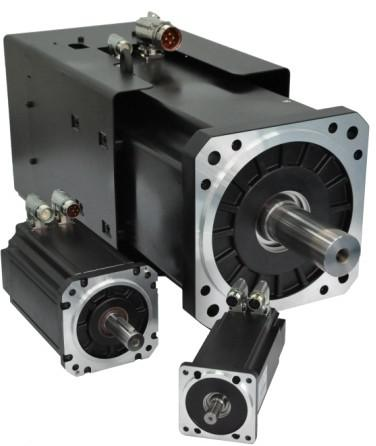Consultation and Evaluation Automation Lines: Revolutionizing Service Provision

In the realm of service provision, efficiency and accuracy are paramount. Whether it's assessing client needs, evaluating service quality, or conducting performance reviews, streamlining these processes can enhance customer satisfaction and drive business success. This is where Consultation and Evaluation Automation Lines come into play, revolutionizing the way service providers manage consultation and evaluation procedures.
The Need for Automation in Service Provision
Service providers face numerous challenges when it comes to consultation and evaluation processes. Manual methods are often time-consuming, prone to errors, and lack scalability. Additionally, subjective assessments can introduce bias and inconsistency, impacting the quality of service delivery. As service providers strive to meet the evolving needs of their clients and maintain competitiveness, automation emerges as a crucial solution.
Introducing Consultation and Evaluation Automation Lines
CEAL represents a paradigm shift in how service providers approach consultation and evaluation processes. Powered by advanced artificial intelligence (AI) technologies, CEAL automates and optimizes these processes, offering a range of benefits for both service providers and clients.
Key Features of CEAL
Customizable Evaluation Criteria: CEAL allows service providers to tailor evaluation criteria to align with their unique service offerings and client preferences. Whether it's assessing customer satisfaction, service quality, or adherence to standards and regulations, CEAL can adapt to diverse requirements.
Streamlined User Experience: CEAL offers a user-friendly interface that simplifies the consultation and evaluation process for both service providers and clients. From submitting feedback to receiving recommendations and insights, every interaction is intuitive and efficient.
Scalability: Whether you're a small-scale service provider or a large enterprise, CEAL can scale to accommodate your needs. From managing a handful of clients to handling a vast client base, CEAL's robust infrastructure ensures seamless performance and reliability.
Continuous Improvement: CEAL utilizes machine learning algorithms to continuously learn and improve over time. As more data is collected and analyzed, CEAL refines its recommendations and insights, enhancing its accuracy and effectiveness.
Applications of CEAL in Service Provision
CEAL has diverse applications across various sectors of service provision: • Customer Service: Automate the evaluation of customer interactions, feedback, and satisfaction levels to enhance service delivery and customer experience.
• Quality Assurance: Streamline quality control processes by automating the assessment of service quality, adherence to standards, and regulatory compliance.
• Performance Management: Conduct objective performance reviews for service providers based on predefined metrics and key performance indicators (KPIs).
• Client Feedback Analysis: Analyze client feedback and sentiment to identify trends, preferences, and areas for improvement in service provision.
In summary, Consultation and Evaluation Automation Lines represent a transformative solution for service providers, offering unparalleled efficiency, accuracy, and scalability. By harnessing the power of AI, CEAL enables service providers to streamline consultation and evaluation processes, deliver exceptional service, and drive business success.
Rotary Encoder: Precision Control in Service Delivery
In the realm of service provision, precision control plays a vital role in ensuring optimal performance and client satisfaction. Whether it's controlling mechanical systems, monitoring equipment operation, or tracking service delivery metrics, precision is essential. This is where rotary encoder come into play, providing accurate and reliable feedback on rotational motion in a wide range of service delivery applications.
Understanding Rotary Encoders in Service Provision
Rotary encoders are devices used to measure the angular position and rotational speed of shafts or axles in service delivery equipment and systems. They typically consist of a rotating disc or shaft with evenly spaced slots, and a sensor that detects these slots as the disc rotates. The sensor generates electrical pulses in response to the movement of the disc, which can then be interpreted to determine the position and speed of the shaft.
Advantages of Rotary Encoders in Service Provision
One of the key advantages of rotary encoders is their ability to provide precise and real-time feedback on rotational motion. Unlike traditional potentiometers, which rely on physical contact and are prone to wear and tear, rotary encoders use non-contact sensing methods such as optical or magnetic sensors. This ensures consistent performance over time, making rotary encoders ideal for applications where accuracy is critical.
Types of Rotary Encoders
Rotary encoders come in various types to suit different service delivery requirements:
• Incremental Encoders: These encoders generate pulses relative to the shaft's movement, providing precise position feedback but requiring a reference point for absolute positioning.
• Absolute Encoders: These encoders provide a unique digital code for each position, eliminating the need for a reference point but requiring more complex electronics to interpret the signals.
Applications of Rotary Encoders in Service Provision Rotary encoders have diverse applications across various sectors of service provision:
• Equipment Control: Used in machinery such as conveyor systems, robotic arms, and precision instruments to precisely control rotational motion and positioning.
• Performance Monitoring: Employed in equipment and systems to monitor rotational speed, direction, and position, enabling real-time performance analysis and optimization.
• Feedback Control Systems: Integrated into feedback control systems to regulate and stabilize equipment operation, ensuring consistent and reliable service delivery.
Recent Advancements in Rotary Encoder Technology Recent advancements in rotary encoder technology have further expanded their capabilities:
• High-Resolution Encoders: These encoders provide sub-degree accuracy, making them suitable for applications requiring fine precision in service delivery.
• Multi-Turn Encoders: These encoders can track multiple revolutions of the shaft, enabling precise position tracking over extended periods of service operation.
• Wireless and Networked Encoders: These encoders allow for remote monitoring and control, facilitating integration into complex service delivery systems and enabling real-time performance management.
In conclusion, rotary encoders are essential components in modern service delivery systems, offering unparalleled accuracy, reliability, and versatility. Whether in equipment control, performance monitoring, or feedback control systems, rotary encoders play a vital role in ensuring optimal service delivery and client satisfaction. As technology continues to advance, rotary encoders will remain indispensable tools for precision control in service provision.

